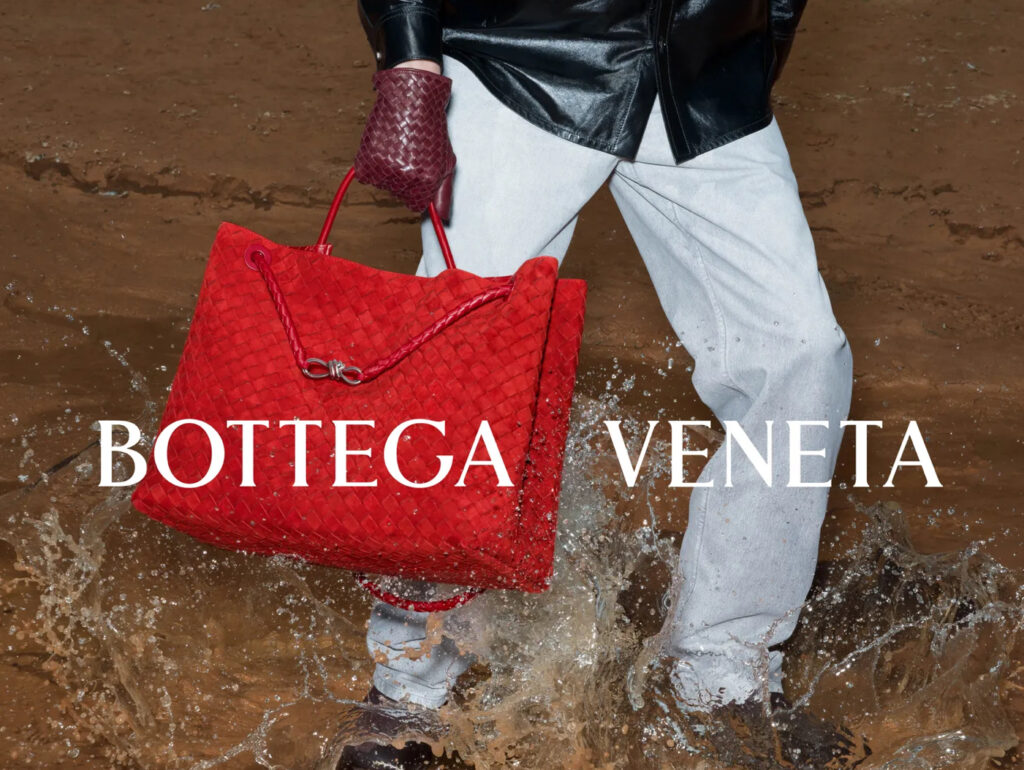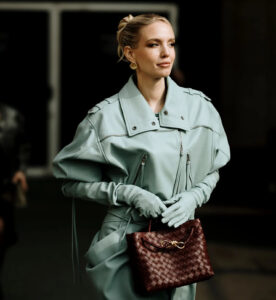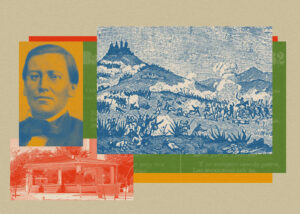

In the age of maximalist branding and Instagram-ready iconography, it might seem counterintuitive for a haute fashion house to lead with silence. But Bottega Veneta has long taken a different path—one defined not by logos, but by craftsmanship. Since its founding in Vicenza, Italy, in 1966—not 1996 as occasionally misreported—the house has embraced a philosophy rooted in discretion, letting the texture of its materials and the complexity of its techniques speak louder than any monogram ever could.
This ethos is perhaps best exemplified in the brand’s now-iconic intrecciato leather weaving. More than a decorative flourish, intrecciato emerged from necessity. Founders Michele Taddei and Renzo Zengiaro didn’t possess the heavy-duty sewing machines typically used to stitch thick leather. Instead, they innovated: slicing fine strips of calfskin and weaving them together to create a supple, durable textile that maintained structural integrity without the need for stitching. What began as a constraint evolved into a language—one that has become Bottega Veneta’s visual dialect.
At its core, Bottega Veneta’s aesthetic resists the performativity so often associated with luxury fashion. There is no flash, no ostentation—only the quiet assertion of mastery. It’s the kind of flow that doesn’t clamor for recognition, but earns it through discipline and restraint. The classic motto of the house, “When your own initials are enough,” captures this sentiment with near monastic humility. The wearer of Bottega is not broadcasting allegiance to a brand, but rather participating in a broader meditation on taste, tactility, and timelessness.
Throughout its history, Bottega Veneta has undergone transformations—some subtle, others seismic. The brand’s creative rebirth under Tomas Maier in the early 2000s solidified its global identity. Maier revived the intrecciato technique, elevating it across accessories, ready-to-wear, and even homeware. Under his stewardship, the brand flourished quietly but expansively, with its leather ateliers in Montebello Vicentino becoming temples of artisanal rigor. Maier reintroduced the world to the power of simplicity, making woven leather synonymous with modern elegance.
Then came Daniel Lee, who helmed the brand from 2018 to 2021. A former protégé of Phoebe Philo at Céline, Lee brought an infusion of youth and geometry. His now-legendary designs—the Pouch clutch, the Cassette bag, and the Lido sandals—demonstrated how restraint could become radical. With exaggerated proportions, pillow-like forms, and matte-finished leather, Lee expanded the possibilities of intrecciato, making it bolder and more architectural. The Pouch, for example, with its soft volume and total absence of hardware or insignia, became a cult hit. It was fashion’s version of ASMR—sensual, satisfying, and strangely comforting.
Even with Lee’s departure and the subsequent appointment of Matthieu Blazy, Bottega Veneta has held its course. Blazy, formerly design director under Lee and with prior stints at Maison Margiela and Celine, has carried forward the house’s respect for process and technique while returning to its roots in tailoring and fluid movement. His ready-to-wear collections eschew the gimmickry of trend-chasing in favor of anatomical precision. Under Blazy, a simple leather skirt is not just cut—it is sculpted, draped, and dyed to evoke motion. His 2022 debut was lauded for its subtle power: denim trousers revealed upon closer inspection to be rendered entirely in nubuck leather, every whisker and fray painted by hand.
In this way, Bottega Veneta has become a standard-bearer for what many now call “quiet luxury.” But that term, while useful, often undersells the brand’s radicalism. This is not just minimalist fashion for the elite. It is a rejection of fashion’s dopamine loop—a refusal to be part of the seasonal hype cycle. Bottega Veneta is not making pieces to be seen on a red carpet or splashed across billboards. It’s crafting heirlooms—items meant to be worn, touched, lived in, and passed down.
The materiality of Bottega’s work is integral to its identity. The feel of a Jodie bag’s handle, the soft puff of a Padded Cassette’s leather lattice, the near-seamless finish of its ready-to-wear garments—these are intimate experiences, reserved for those who choose to live with the pieces rather than simply flaunt them. The luxury here is not only in the price tag, but in the engineering of emotion through surface and structure.
That sense of intimacy is what makes spotting a Bottega Veneta bag in the wild such a rare delight. When you see one—usually slung over the shoulder of someone who understands that true style whispers—you recognize it not by a nameplate, but by the texture. The weave becomes a signature in and of itself, a fingerprint of a house that has mastered the art of nonverbal communication.
This resistance to overt branding has also allowed Bottega Veneta to remain, paradoxically, both exclusive and widely beloved. It does not chase virality. It does not flood the market. Even during the height of Daniel Lee’s influence, when the Pouch was arguably the it bag of 2020, the brand managed to remain inscrutable. That mystique is difficult to maintain in the algorithmic age, and yet Bottega has done so without sacrificing relevance or sales.
As fashion reels from the fatigue of fast cycles and empty iconography, Bottega Veneta offers a model for what comes next. A return to tactility, to storytelling through technique. A belief that luxury is not about being seen, but about being felt—by the hands that craft the product, and the body that wears it. In a world where so much is designed to be scrolled past, Bottega’s creations ask to be held.
That is the enduring power of the intrecciato weave. It is not just a pattern. It is a philosophy rendered in leather—an argument for patience, process, and permanence. It is the embodiment of a brand that never needed a logo to be recognized.
Because when your work speaks for itself, there is no need to say anything at all.
No comments yet.








